Complex Needs Resource Base (CNRB) Curriculum
We have 2 classes in the Complex Needs Resource Base (CNRB). Pupils work predominantly in one specific class depending on their level of need. Because the children will often stay within the class for the duration of their time at the school, the curriculum cycles around 7 years, although many key concepts and skills are covered regularly.
Sun Class
The class follow a blended approach of formal and informal learning through free flow continuous provision, teacher-led carpet time and focused teaching groups. There are frequent, structured transition times where pupils access a wide variety of activities which are designed to support individual areas of need. The pupils have personalised approaches to support their learning, social skills and self-help skills, which draw on elements of TEACCH systems, as well as learning through child-led interests and the Engagement Model. There are designated areas on the classroom for different areas of learning, including formal learning at group tables, a story area, book corner, sensory space and outside area. Children access learning in a highly engaging, multi-sensory way which taps into their own interests and ideas. The pupils have short-burst learning inputs to support concentration and engagement, with activities that are often movement-based and modelled by adults in the classroom. There is a clear structure to the day of lessons, which visually progress on the interactive whiteboard in short chunks throughout the day, as well as via the full day visual timetable. Each session is ended with a countdown and reminders for where to transition to next. There are daily ‘check-in’ sessions to support the children’s understanding of emotional learning and weekly PSHE sessions which follow the whole-school curriculum. The pupils have two social snack and break times, which additionally supports their emotional and social understanding, with adults modelling interactions during this time. There is a high staff-pupil ratio which supports pupils in their academic and social learning, with support staff taking on a smaller group of key children which they work with more frequently and take an active role in working on EHCP targets. To aid communication, Makaton signs and picture symbols are used throughout the classroom, which the children are encouraged to use on a daily basis. The Resource Base has a strong foundation within the mainstream school itself, and pupils are able to access their chronological year group for trips and sessions, where appropriate for each child.
The curriculum is tailored and personalised for each individual child, focussing on supporting areas of learning that the child finds most difficult. The objectives that are followed are a blended approach of Early Years learning goals, National Curriculum, ASD Framework statements and the Engagement Model, as well as honing in on each individual child’s key targets from their EHCP. The pupils also access a variety of different provisions, including Attention Autism sessions (Bucket Time), ELSA support, speech and language, Music sessions with a Music specialist, and Forest School sessions, as well as opportunities to refer to outside agencies and therapists. Pupils are assessed informally throughout the year, using ‘Evidence for Learning’ which records the small step progress of the children. Judgements are made by assessing the level of support needed to successfully complete a target, as well as the level of understanding within this. Parents are invited to attend annual review meetings to discuss this progress and look at next steps in order to progress with their EHCP targets.
Sky Class
Intent
In Sky class, the learning is based on objectives from the National Curriculum and Development Matters. The objectives are differentiated based on the need of the child in each area. Topics are chosen for encourage engagement from the children and when possible the choices are opened up to the children too. Our changing topics mean we can repeat objectives to embed learning but in different ways to maintain interest.
Our topics and books are the same across the Rainbow unit however the teaching and activities vary to meet the needs of the children in each class.
Implementation
In the classroom, children have individual desks which can be grouped in different ways. They access whole class teaching with highly differentiated activities as well as lessons in small groups with individualised learning objectives. Targets from EHC Plans are embedded into the learning objectives. Imbedded in the daily timetable, are opportunities for fine motor skills development, transition time and time to talk about feelings on a daily basis.
Impact
Pupils are assessed informally throughout the year, using ‘Evidence for Learning’ which records the small step progress of the children. Judgements are made by assessing the level of support needed to successfully complete a target, as well as the level of understanding within this. Parents are invited to attend annual review meetings to discuss this progress and look at next steps in order to progress with their EHCP targets.




